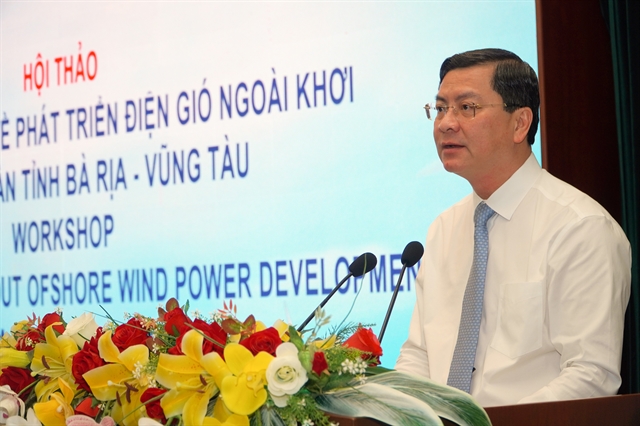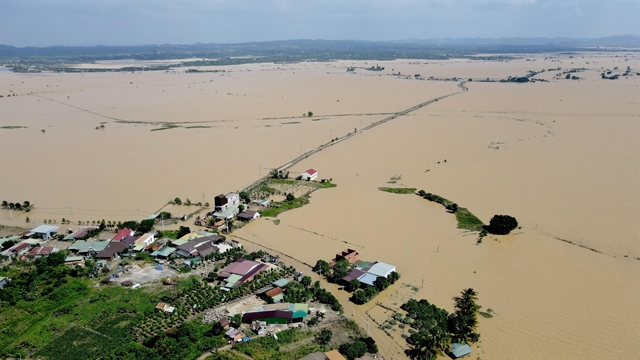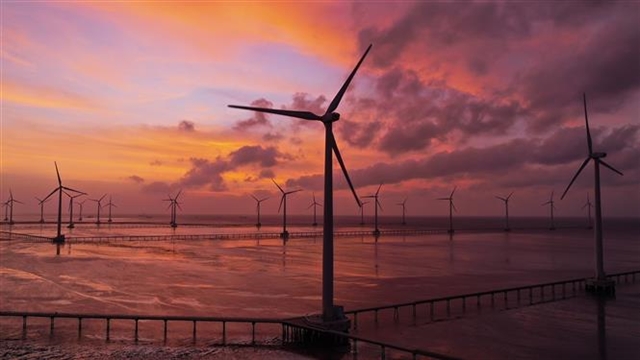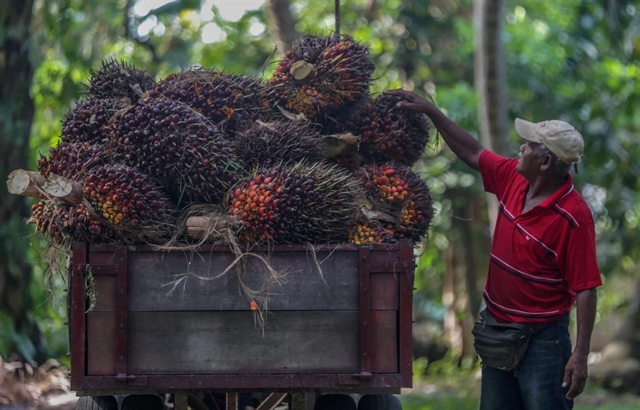 Economy
Economy

 |
| A wind farm in Bạc Liêu Province. VNA/VNS Photo |
Ly Ly Cao
Given strong encouragement for the rapid expansion of renewable energy sources, especially wind power projects, by the Power Development Plan VIII, leading renewable energy companies are expecting long-term benefits.
Việt Nam's industrial and construction sectors are projected to experience a robust increase in electricity consumption in 2025, driven by the continued inflow of foreign direct investment (FDI) into these industries, according to a recent report by Tiên Phong Securities Corporation.
Data reveals that the proportion of newly registered FDI targeting the processing, manufacturing and construction sectors has risen significantly, to around 78.5 per cent in 2023 from 46.7 per cent in 2021.
The industrial and construction sectors are the largest electricity consumers in the country, accounting for over 50 per cent of total consumption in recent years. Their recovery, aided by rising FDI, will drive electricity demand growth.
The Power Development Plan VIII targets 335 billion kWh of commercial electricity by 2025, with the compound annual growth rate (CAGR) of 8.9 per cent, and 505 billion kWh by 2030, requiring capacity expansion.
Renewable energy's contribution has set targets of 30.9-39.2 per cent by 2030 and 67.5-71.5 per cent by 2050, up from 26.4 per cent in 2022, as the sector benefits from the plan.
Wind power will be a major focus in the country's electricity sector going forward. The share of wind power is targeted to increase significantly, from 5 per cent in 2022 to 19 per cent by 2030 and 29 per cent by 2050.
"Wind power is considered a relatively stable and environmentally friendly source of electricity. Therefore, it is a power source that has been prioritised for investment and development under the Power Development Plan VIII," Việt First Securities Corporation's analysis team told Việt Nam News.
To support the segment, in 2018 the Government introduced a feed-in tariff (FiT) policy for wind power projects with a commercial operation date before November 1, 2021, the team added. The FiT rate was set at 8.5 US cents/kWh. This policy guaranteed a stable electricity price for wind farms for 20 years, helping to promote investment in the sector.
Onshore wind power is expected to grow at a rapid compound annual rate of 20 per cent between 2022 and 2030, before moderating to a 6 per cent growth from 2030 to 2050.
Meanwhile, offshore wind development will be a key priority, with plans to install 6,000 MW of offshore wind capacity by 2030. This offshore wind segment is projected to sustain a strong CAGR of 15 per cent from 2030 to 2050.
However, the current laws and regulations were insufficient to manage offshore wind power development, causing challenges from planning to operation, said Nguyễn Thanh Bình, head of the Electricity and Renewable Energy Department, at a conference about pilot offshore wind power projects in Việt Nam by the end of May.
As the country lacks experience in this field, Bình suggested that a pilot programme for offshore wind power could help refine regulations and policies, stimulate the growth of supporting industries, and build a domestic supply chain while gaining valuable management and technological experience.
The Power Development Plan VIII also aims to ramp up the overall contribution from renewable energy sources. The plan sets a target range of 30.9-39.2 per cent renewable energy share by 2030, and even more ambitious 67.5-71.5 per cent by 2050.
It also includes objectives to develop renewable energy and new energy production capabilities for export, with a goal of 5,000 to 10,000MW of export capacity by 2030.
By 2030, two inter-regional renewable energy hubs are expected to be established, encompassing manufacturing, transmission and consumption of renewable electricity.
Long-term benefits
Leading renewable energy companies like Bamboo Capital Group, Gia Lai Electricity, Truong Thanh Deconin, Hà Đô Group, PC1 Group and Sao Mai Group are expected to see long-term benefits from the Power Development Plan VIII.
Gia Lai Electricity, PC1 and Refrigeration Electrical Engineering Corporation have the largest total wind power capacity in the country, according to Việt First Securities. Importantly, these are also the companies that benefit the most from the preferential FiT policy for wind power projects.
In the first quarter of the year, just a few firms, including Bamboo Capital, PC1 and Gia Lai Electricity, maintained positive revenue growth and improved gross profit margins compared to the same period last year.
Securities analysts highlight Bamboo Capital as having particularly strong prospects. The company has over 900MW of wind power projects prioritised for implementation under the new power plan, making it one of Việt Nam's top renewable energy developers.
Bamboo Capital is rapidly developing 550MW of onshore and offshore wind projects, aiming for commissioning as soon as next year.
The group is also investing in waste-to-energy, with a 2,000 tonnes per day 70MW plant in HCM City planned to be completed by 2025. It is also building a 500 tonnes per day waste-to-energy plant in Long An Province, with plans to expand it to 1,500 tonnes per day.
Hà Đô Group's renewable energy business is also promising. The company has recently secured investment certificates for a 50MW wind project in Ninh Thuận Province, and an 80MW wind project in Lạng Sơn Province.
It currently operates eight energy plants -- five hydropower, two solar and one wind -- with a total capacity of nearly 500MW, generating around US$77 million in annual revenue.
By 2030, Hà Đô aims to increase its power generation capacity to over 1GW, targeting nearly US$200 million in annual revenue. VNS




